Siena Before the Rain

Hello friends. Imagine being transported to a medieval Italian city. This city is divided into 17 districts, each with its own name, emblem, motto and unique history. Twice a year people gather in the main square of the city for wild horse races. Each horse represents a district. The winning side celebrates until morning and doesn’t let their "enemies" from neighboring districts get any sleep. In the morning, people go to church and then return to their daily routines: banks, workshops, the university. Can you picture it? If you want to see all of this with your own eyes and, more importantly, feel it with your heart, then you must visit Siena.
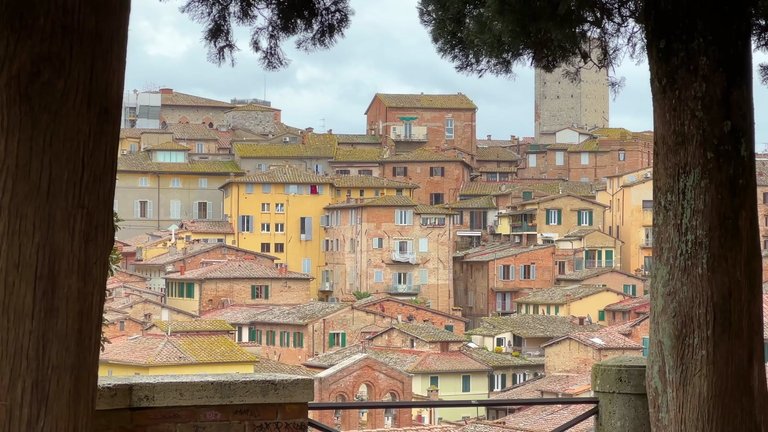
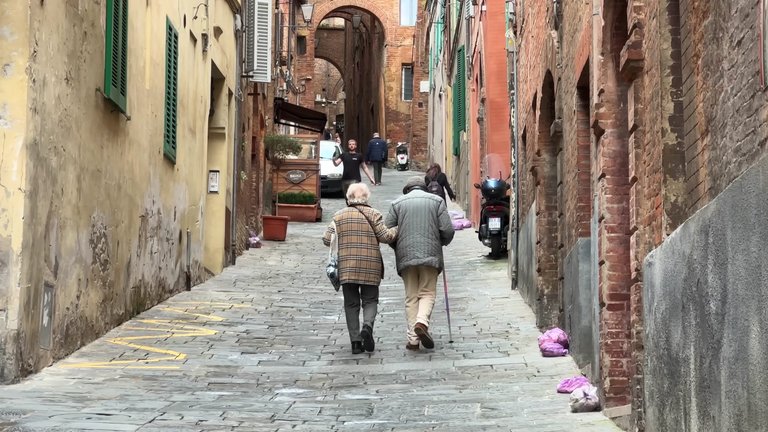
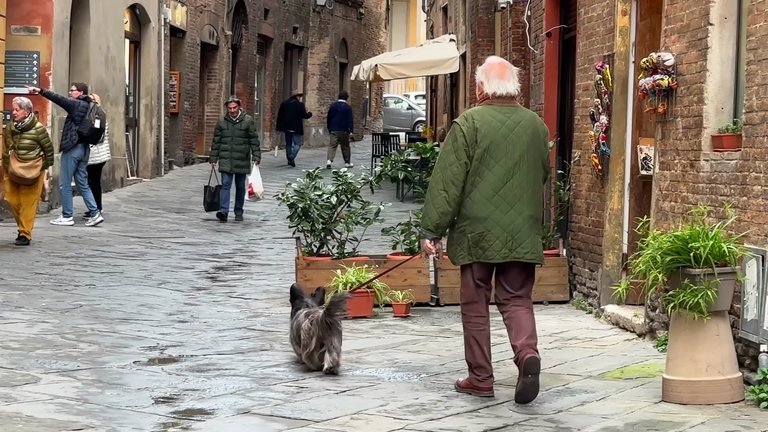
Siena is located in the central part of Italy, in the Tuscany region. It's famous for its breathtaking hills. No matter which direction you go from the city, you’ll be met with incredible landscapes. These views become especially stunning in summer and autumn. It’s impossible to imagine the most characteristic region of colorful Italy, Tuscany without Siena.
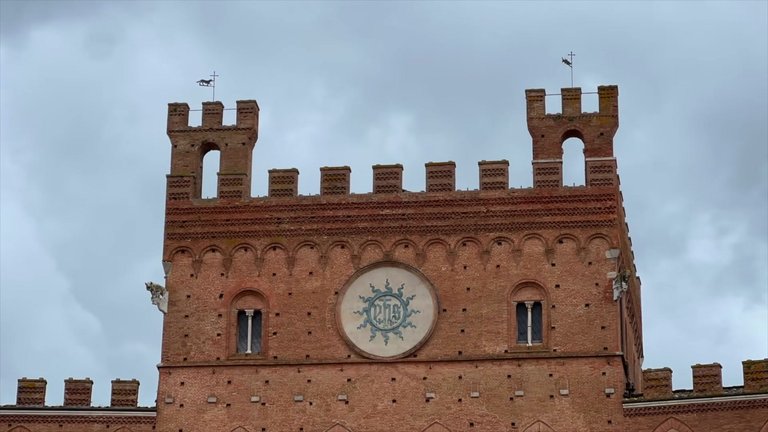

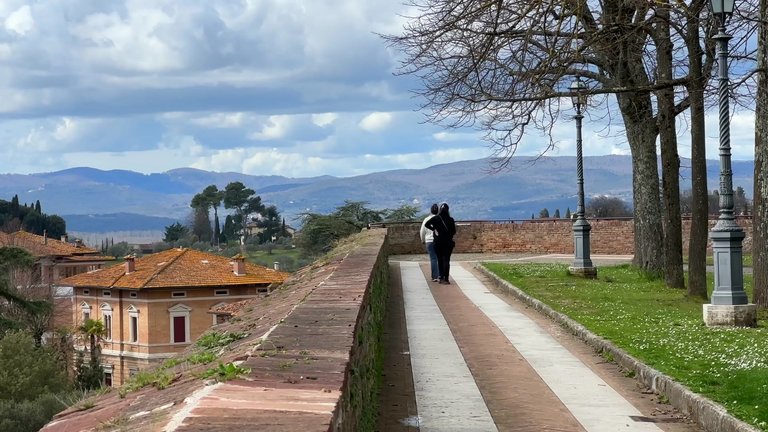
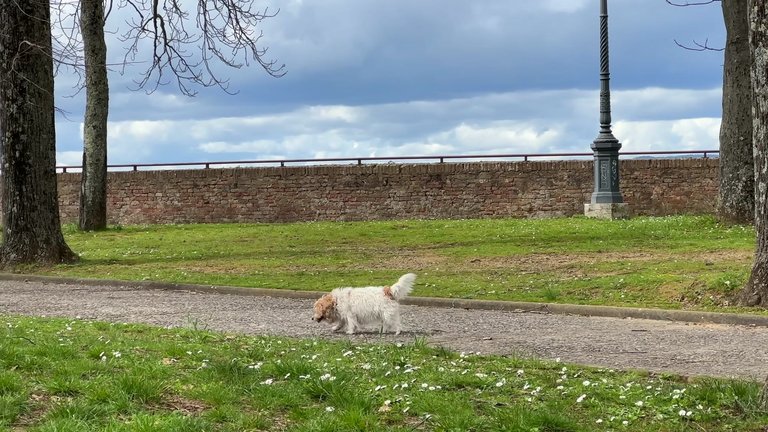
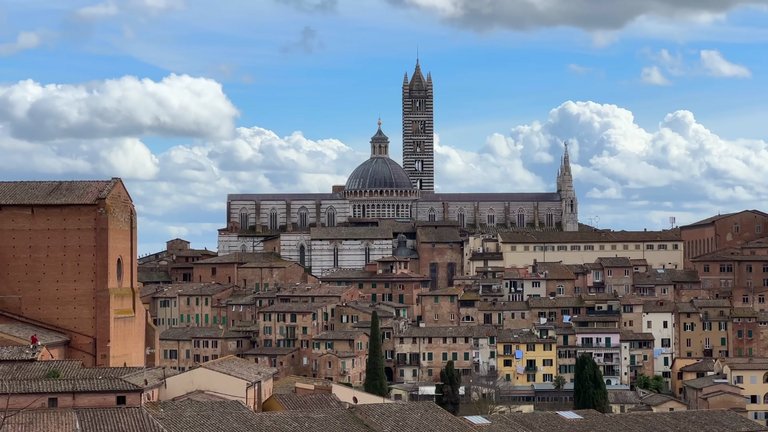
The city is built on three hills. Its population is around 55000, nearly half of which are students. The University of Siena was founded all the way back in 1240. It’s one of the oldest universities in Europe. In the 13th century Siena had become a powerful city not just culturally but also economically. The population was growing rapidly, providing labor for textile, clothing and craft production. Its location along trade routes and its advanced banking system gave the city great power in construction and warfare.
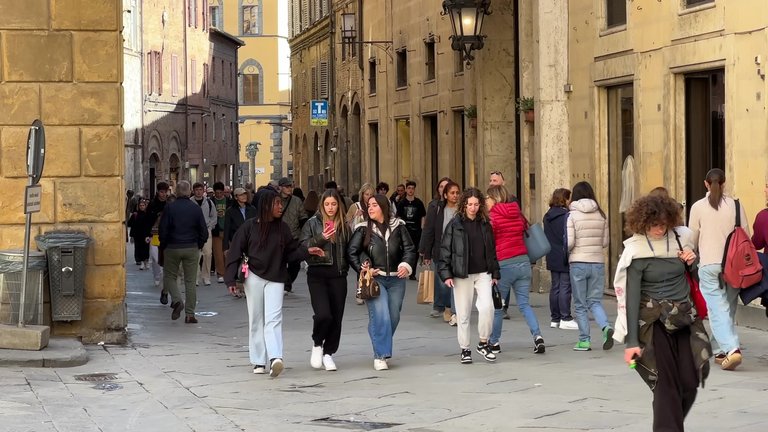
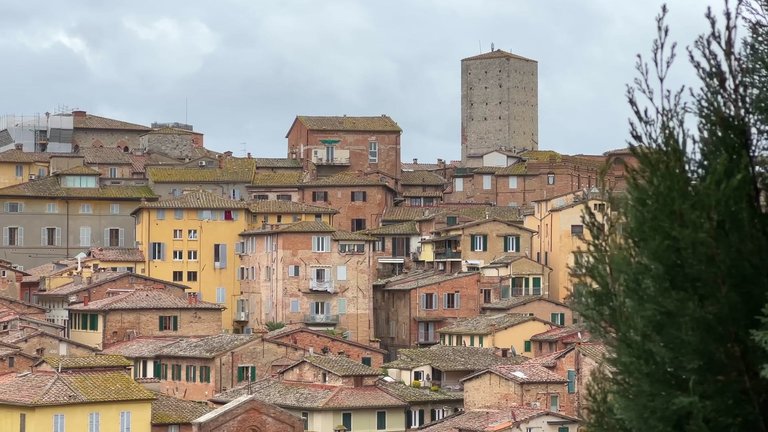
Siena's greatest enemy for centuries was Florence. Today, the rivalry may not seem fair since Dante’s city is seven times bigger. But 700 years ago, things were very different. At the time, Italy was divided between the Guelphs, who supported the Pope and the Ghibellines, who supported the Emperor. Siena sided with the Emperor, while Florence supported the Pope. There was also a fierce struggle for fertile lands and regional control.
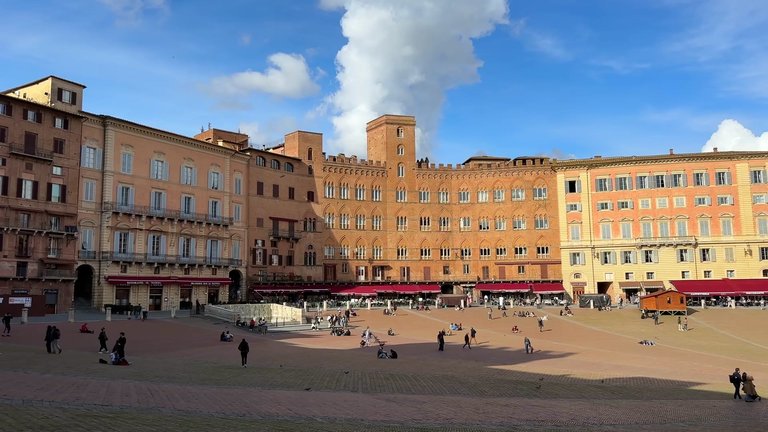
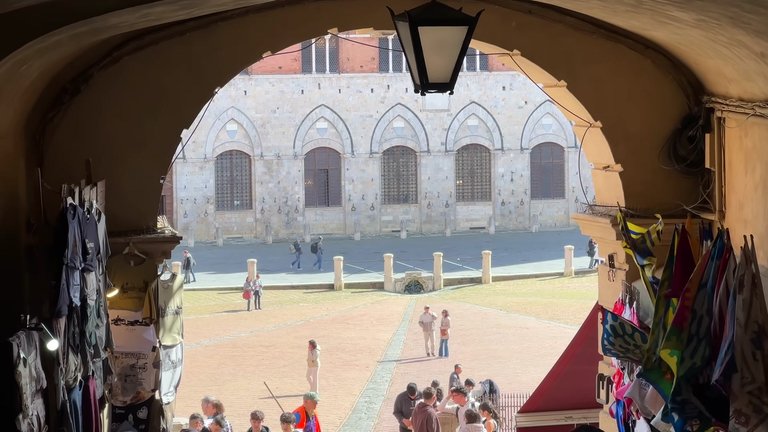

In 1260 a major battle occurred near Siena, at Montaperti. Florence suffered a heavy defeat. The Ghibellines claimed a great victory. But it didn’t last long. Nine years later, Florence took revenge and the Guelphs seized control of Siena again. Despite losing to Florence, Siena’s economic development continued. And where can you feel this the most? Of course, in the heart of the city: Piazza del Campo. This square means everything to Siena. It’s the city’s only large open space, since the rest of the city consists of narrow streets running up and down the hills. Eleven main streets all begin here. And the legendary horse race Palio is held here. All major buildings are located in this square. This was also where I began my journey through Siena.
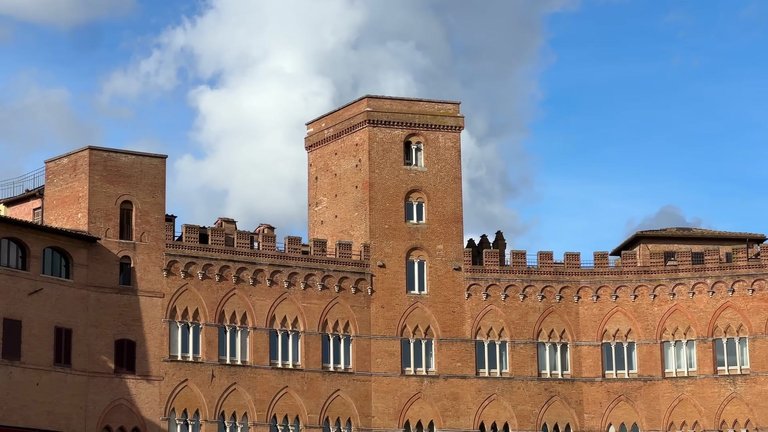
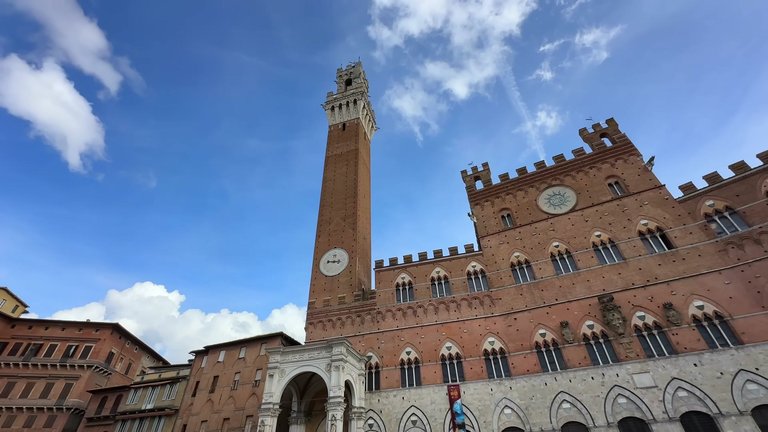
From above the square looks like a seashell, divided into nine sections. This symbolizes the Government of the Nine, established after Florence’s defeat in 1287. It was an oligarchy made up of powerful merchants and bankers, excluding the aristocracy and small craftsmen. Interestingly this was also Siena’s golden age. The city hall was built during this period. Construction began in 1297 and was nearly completed within just two years. The right side belonged to the Council of Nine, while the left was for the Podestà, the executive and judiciary authority. Today the building houses the city hall and a museum.
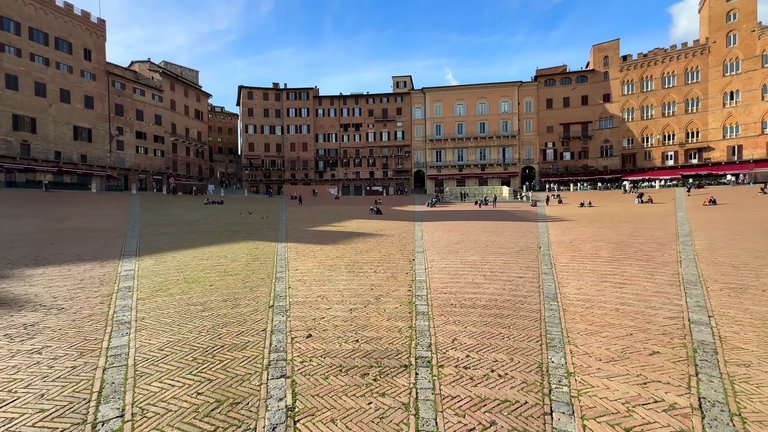
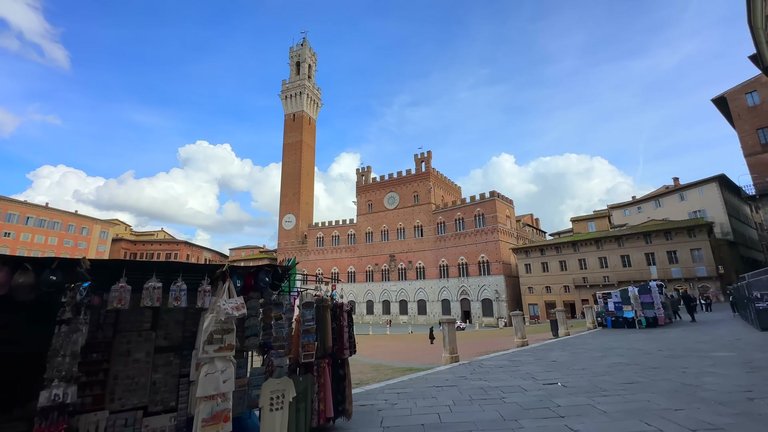
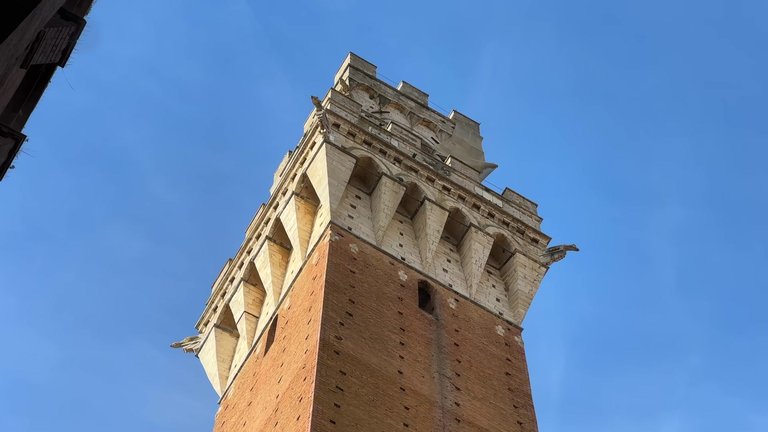
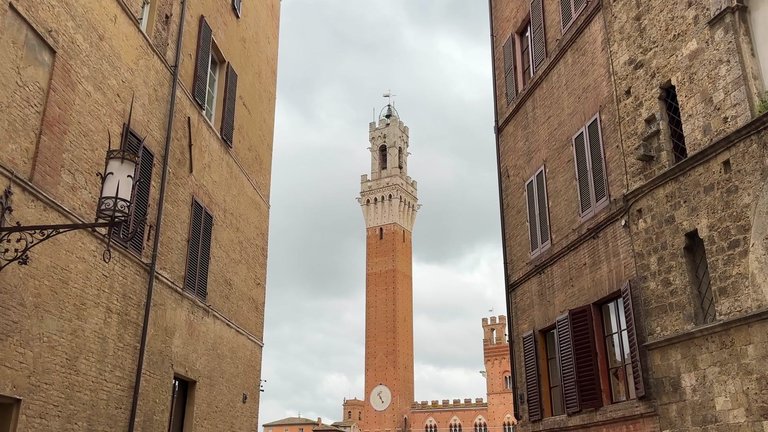
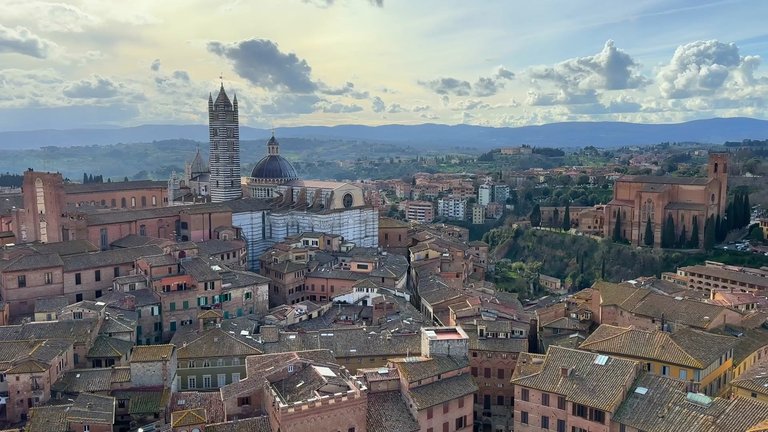
Inside the museum, you’ll find works by Simone Martini, one of the Proto-Renaissance masters. You can also see the Hall of the Nine and the Banquet Hall. On the left side stands the Torre del Mangia, the tallest tower in Tuscany. It was built between 1338 and 1348. The year 1348 also marks the end of Siena’s golden age. To climb the tower, you must tackle 400 steps, but the view from the top is like a dream.
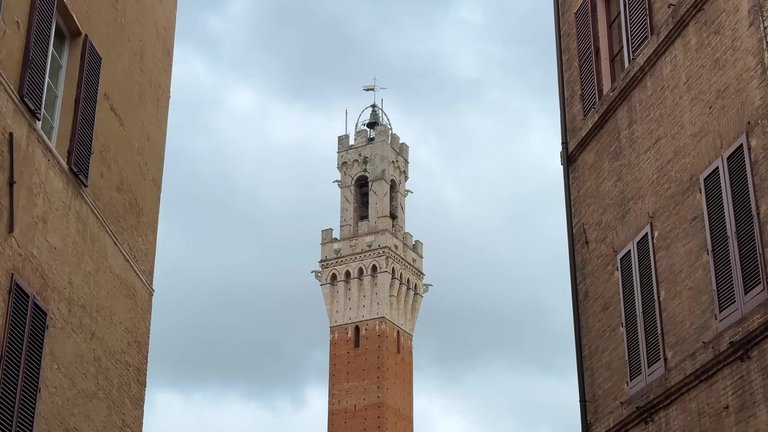
Torre del Mangia translates as the Glutton Tower or the Tower that Eats Income. It’s named after Giovanni di Balduccio, the first bell-ringer of the tower, known for his laziness and gluttony. Since the bell-ringer was one of the most important figures in town and Balduccio was the first in this tower, it was nicknamed after him.
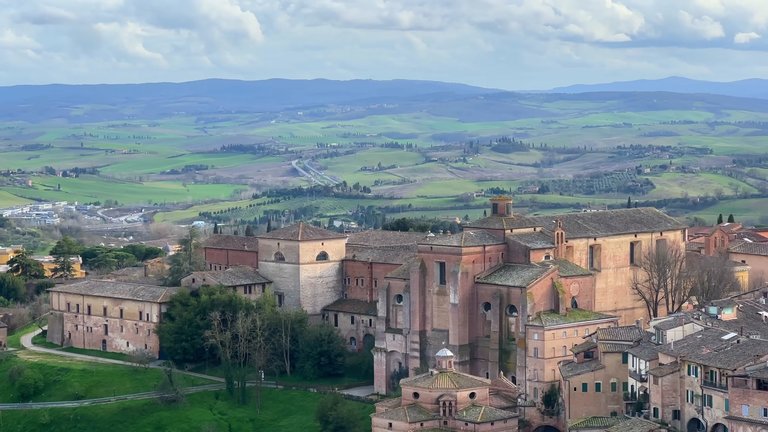
Today climbing the tower costs 400 steps, about 80 calories and 10 euros. But the panoramic view is absolutely worth it. You’ll see the structure of the city, its winding streets, how it expanded with its walls and the cathedral and Tuscan hills in the distance. If you’re physically able, it’s highly recommended.
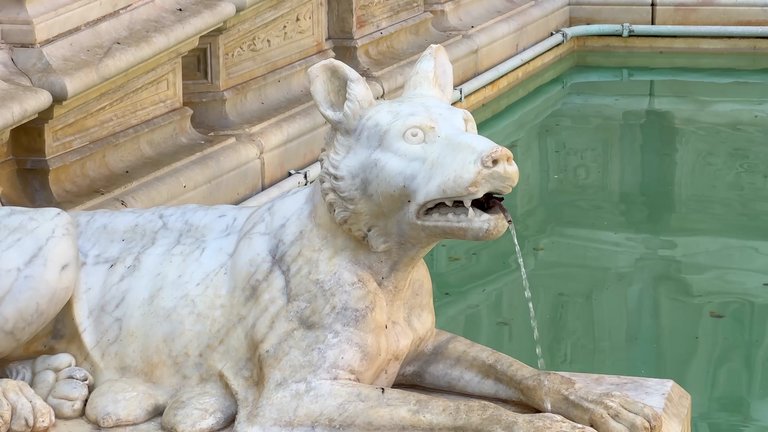
Directly opposite the city hall is the Fonte Gaia or Fountain of Joy. It looks like a clean, pool-like structure. The natural spring that once flowed here brought such joy to the people that they decided to build this fountain in celebration. All the sculptures were created by Jacopo della Quercia, one of the most famous sculptors of the early 15th century. Sadly by the 19th century the statues had deteriorated, so what we see today are replicas. The originals are preserved in a museum.
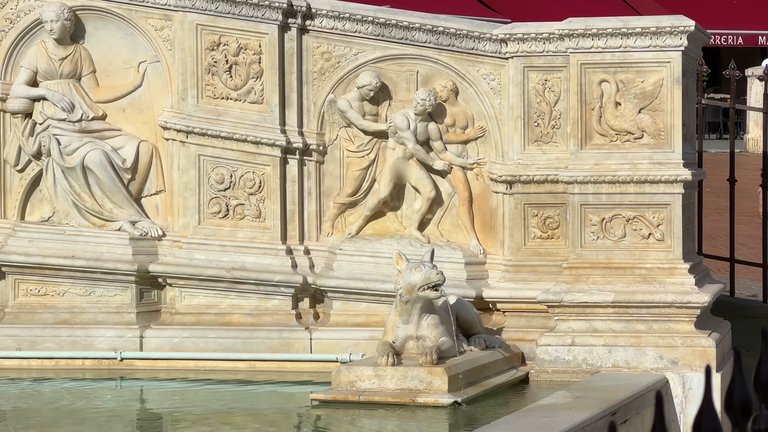
Looking at Piazza del Campo, you’ll notice how harmoniously the buildings blend with each other. None stands out, none is more ornate than the rest. This is no coincidence. Even though wealthy families lived here in the 10th century, any building that disrupted the harmony of the square was prohibited by law. All buildings had to match the overall design of the square. One of the best examples is the Palazzo Sansedoni. Once five separate noble homes, they were merged into a single palace. Notice how it perfectly fits the curve and slope of the square.
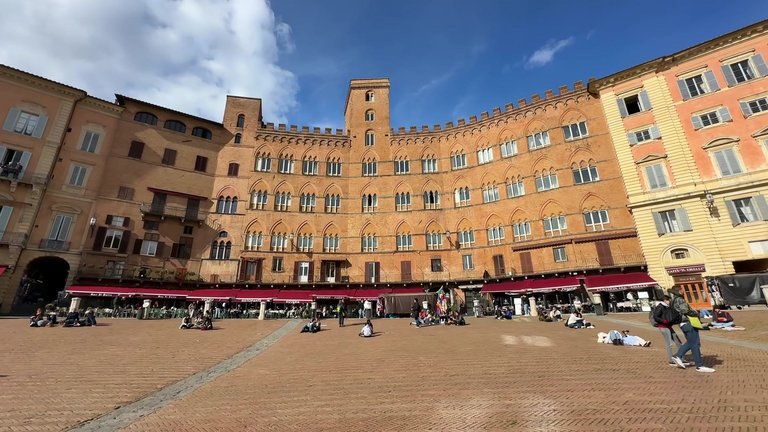
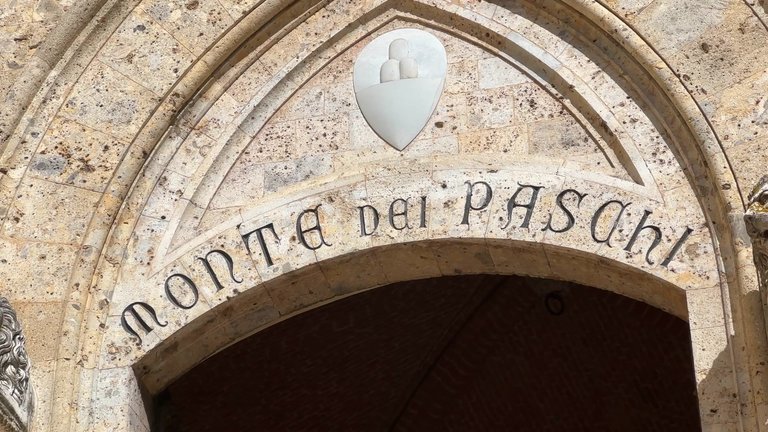
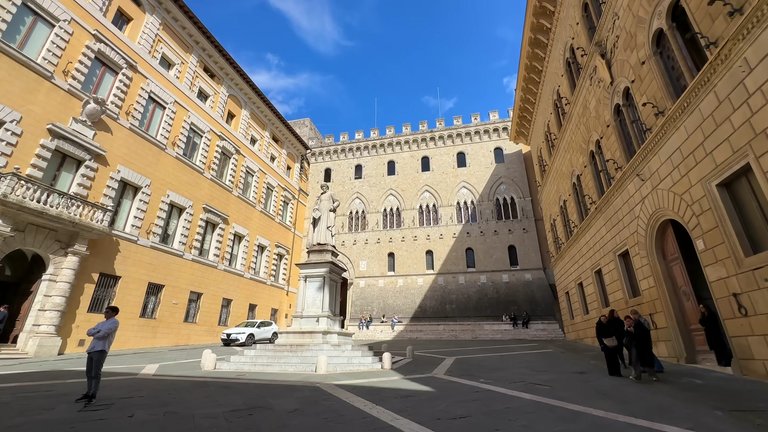
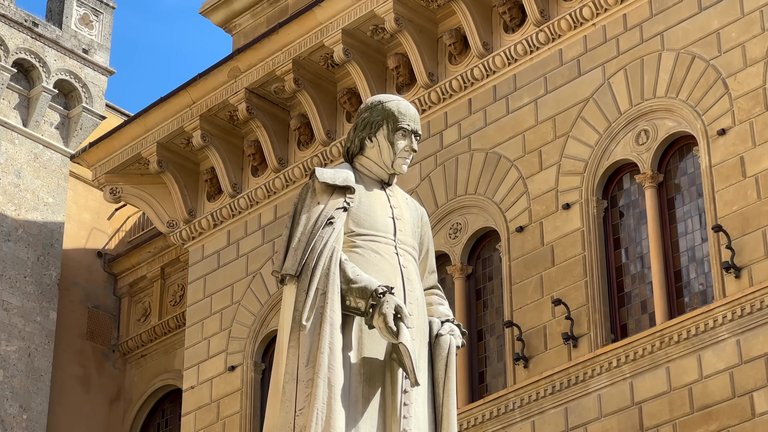
There used to be a very tall tower on this building. But after an earthquake in the 19th century, it was significantly shortened due to the risk of collapse. Today, this building houses the offices of Monte dei Paschi di Siena, the oldest bank in the world, founded in 1472 and still operating. It was originally established to provide credit to the most vulnerable members of society. Its headquarters is the 10th-century Palazzo Salimbeni. In recent years the bank suffered billions of euros in losses but finally returned to profit in 2021.
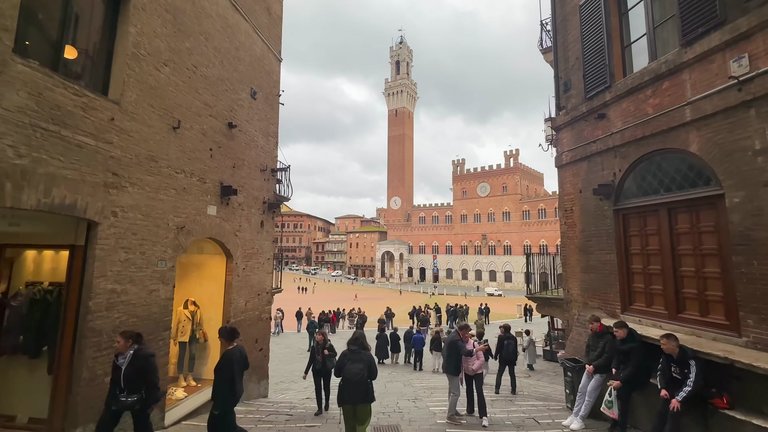
Today Siena is known worldwide for a very special tradition: the Palio horse races. In the Middle Ages, the people’s favorite pastime was bullfighting. But when the governor of Tuscany banned bullfights at the end of the 15th century, people turned to bull races, then donkey races and finally, in 1656, the first real horse race was held. That tradition continues to this day. The Palio takes place every year on July 2 and August 16. Occasionally, an additional race is held between September and May.
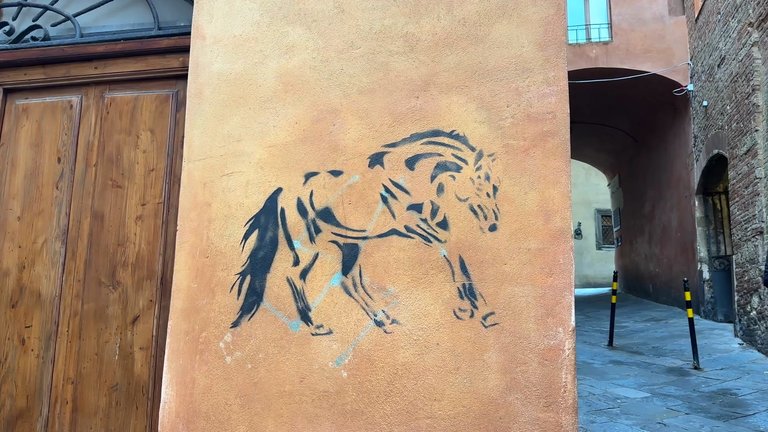
The most unique feature of the race is that each district sends its own horse and jockey to compete. Siena is divided into 17 contrade. Each has its own name, emblem, slogan, patron saint and history.
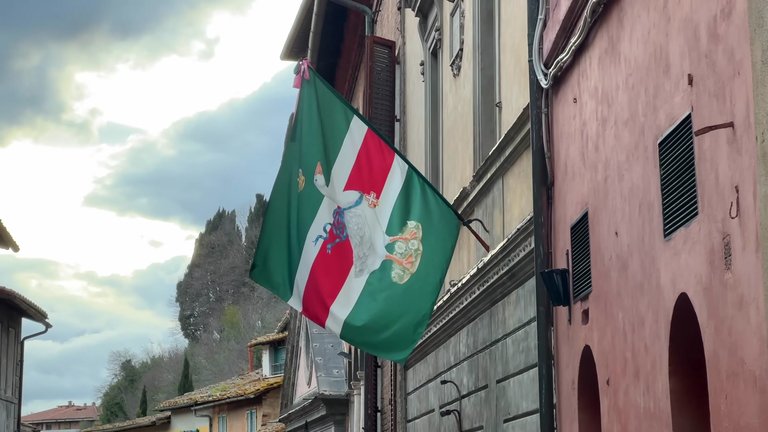
Originally contrade were created to organize food distribution, tax collection and military duties. During wars with Florence, these districts supplied soldiers. Over time, those functions faded, but the contrada system remained the heart of the city’s social life. Even today, street signs indicate when you’ve entered a different district. For example, if you see a lamb emblem followed by an elephant emblem, you’ve crossed into another contrada. Each district also has a historical enemy, usually a neighboring one.
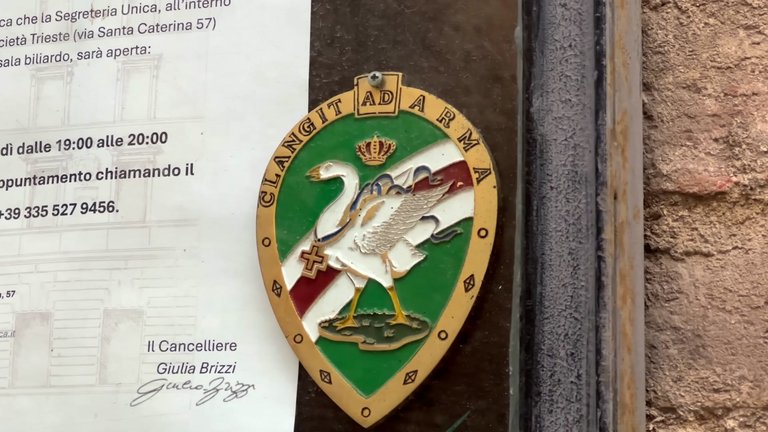
Changing districts in Siena is nearly impossible. If lovers come from different contrade, even if they marry, they remain in their own districts. Children are registered based on gender: girls in the mother’s contrada, boys in the father’s. The passion at the heart of the Palio comes from this. It’s the ultimate expression of centuries-old local rivalry. The prize for the winning horse is a silk banner depicting the Madonna and Child, newly designed each year as a work of art.
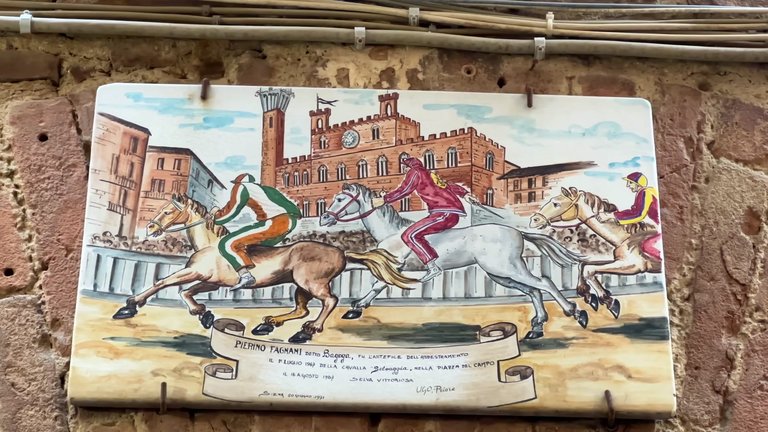
If you want to experience a true medieval fairytale, come to Siena on July 2 or August 16. Or, if you'd rather feel the spirit through film, watch Il Burbero (The Grouch), starring Adriano Celentano. The story takes place in Florence and Siena, right during the Palio.

The Siena Cathedral is not only a masterpiece of art but also a symbol of a time of crisis. Construction began in 1196 and by the early 14th century, most of the main parts were completed. For years, Giovanni Pisano oversaw the decoration of the facade. He was one of the artists who would later inspire Michelangelo. The young Florentine genius was commissioned to sculpt four statues for the Piccolomini altar. He was supposed to create 11 more, but this plan was abandoned when he received the commission for the statue of David.
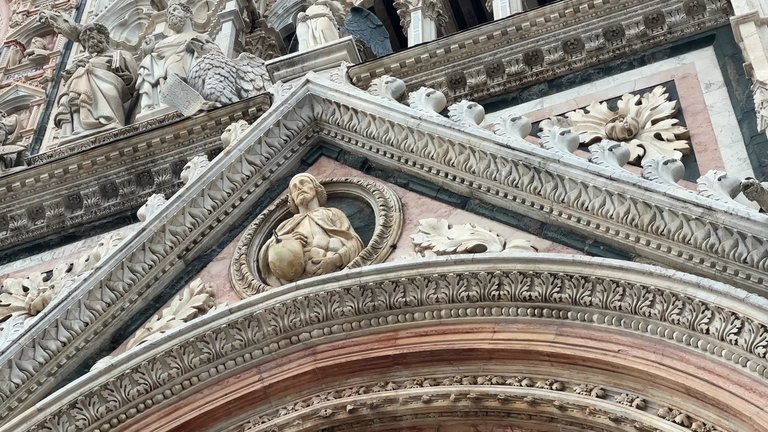
Important Renaissance masters worked on the cathedral's interior decorations, including Gian Lorenzo Bernini. Bernini’s presence in Siena proves how wealthy the city was and that its rulers could attract the finest artists of the time.
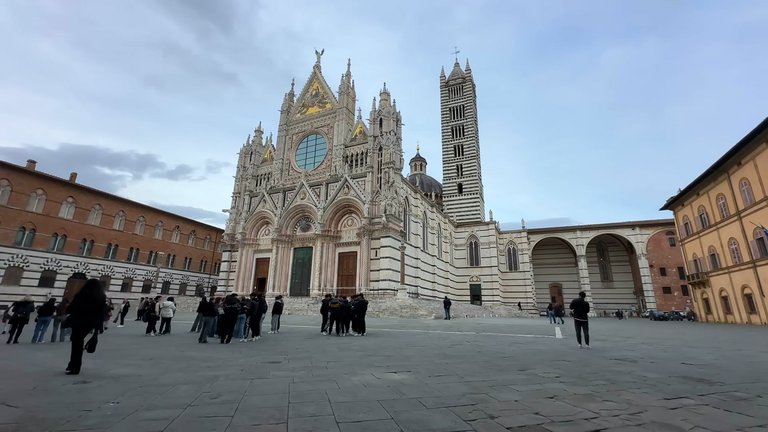
By the early 14th century, the cathedral was nearly finished in its current form. But Siena’s rival, Florence, had started building Santa Maria del Fiore, the largest cathedral in Italy. How did Siena respond? They planned to use their already massive cathedral merely as the transept of a much larger one. But the project was never completed. Even today, you can see unfinished columns and walls.
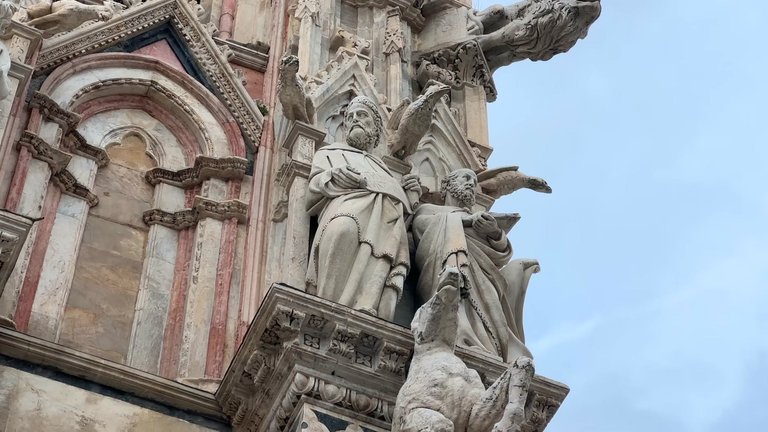
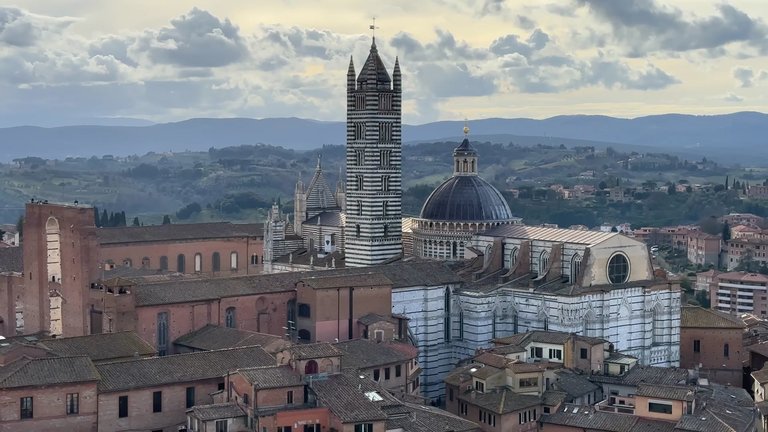
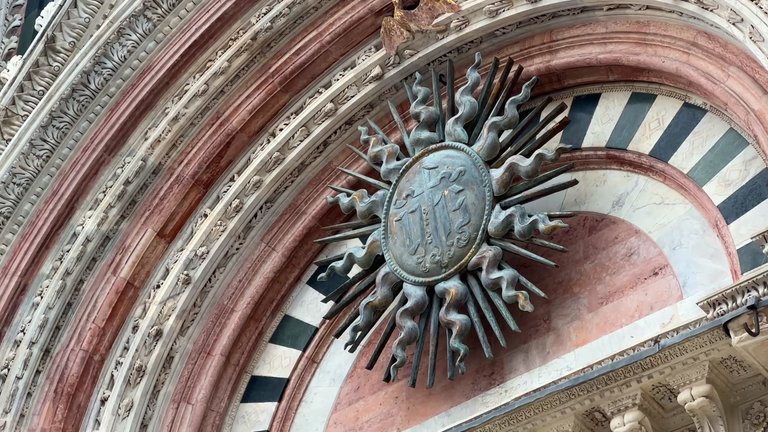
Why didn’t it happen? In 1347 a ship from the Black Sea brought the plague to Sicily. By 1348 it had swept across Europe. The Black Death hit Siena hard. Florence recovered, but Siena never regained its former glory. The 15th century was full of disasters: plagues, climate change, famines, wars. As wars grew, kings borrowed heavily from banks, then defaulted. Siena’s banking system collapsed. These disasters turned people toward the church. But then the Papacy moved to Avignon. The Pope was arrested, beaten and soon died. His successor barely lasted and the new Pope moved to France. This created a spiritual crisis for many.
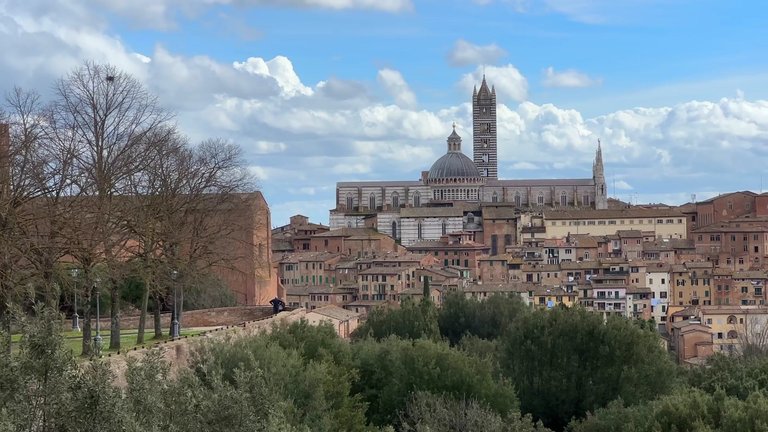
This century also saw signs of class struggle. Uprisings like the Ciompi Revolt in Florence showed the poor were beginning to demand a voice. For all these reasons, the Siena Cathedral symbolizes crisis. Its unfinished plans, its excessive ambition, reflect the limits of human power. Yet these crises led to the Renaissance.
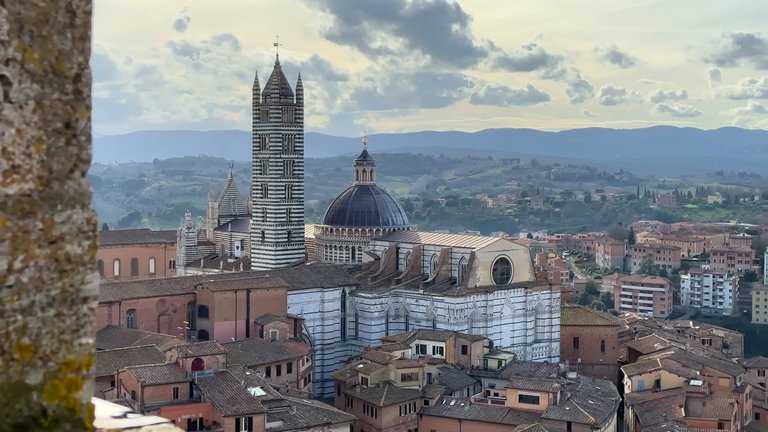
Siena didn’t become the cradle of the Renaissance. Florence did. From the 15th century onward, Florence became Europe’s cultural capital. Masters like Brunelleschi, Donatello, Masaccio and Michelangelo emerged. Behind this rise were economic growth and military power. The symbol of Florence’s victory over Siena was the Medici Fortress. Today it’s a lovely place for a walk and photos. There’s a large parking area underneath.
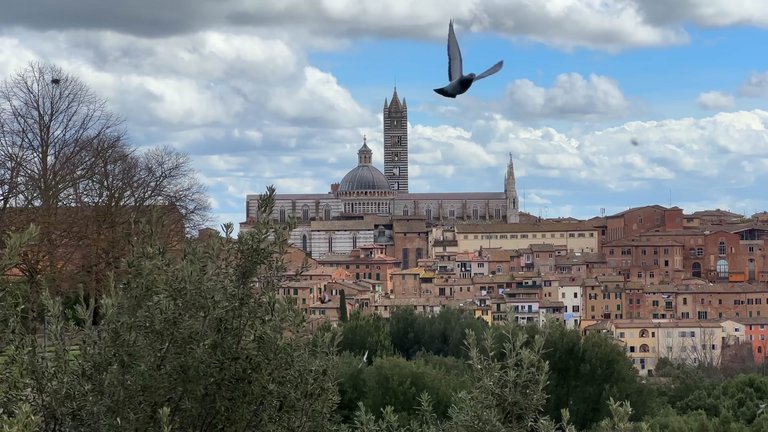
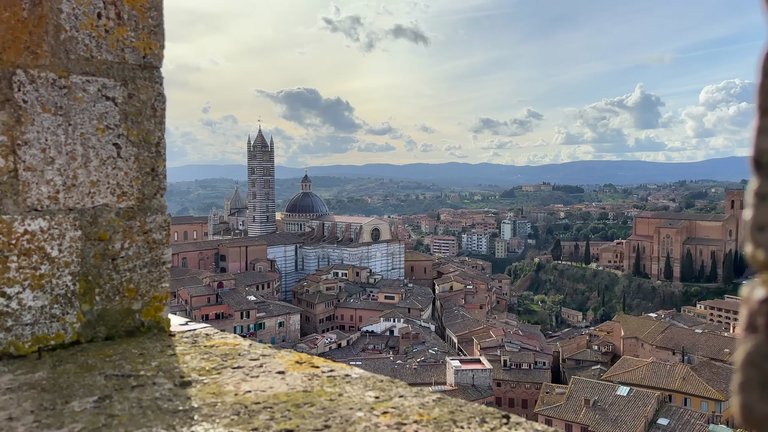
Near the fortress stands the Basilica of San Domenico, named after Saint Catherine of Siena. The basilica took its current form in the 14th century and holds the saint’s holy relics. Catherine played an active role in politics and convinced the Pope to return to Rome. She also followed Dante’s tradition by turning the Tuscan dialect into the language of theology, a dialect that would later form modern Italian.
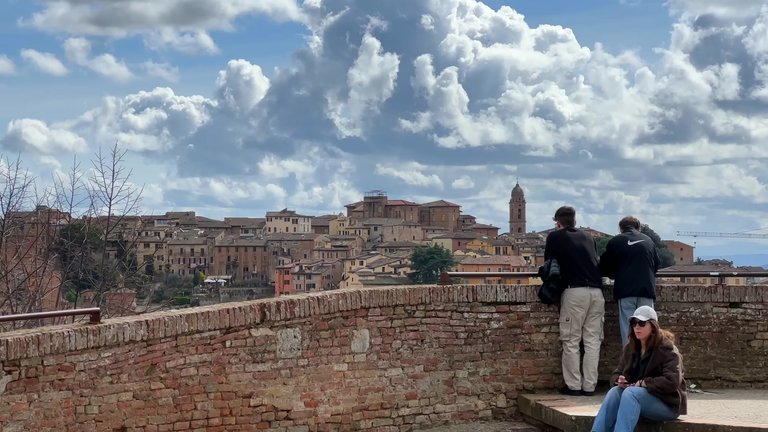
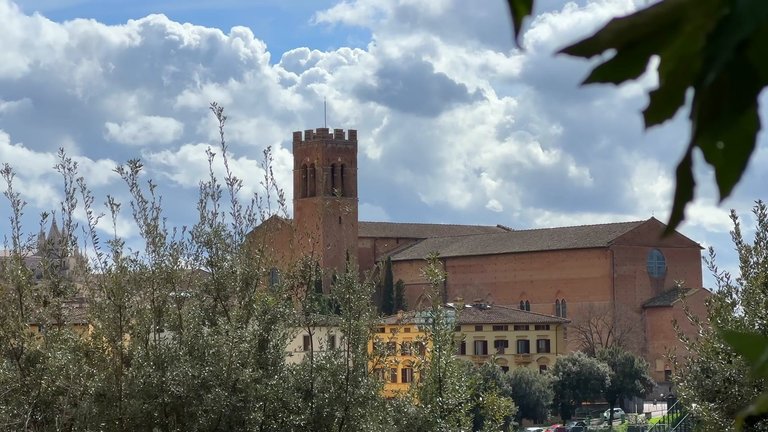
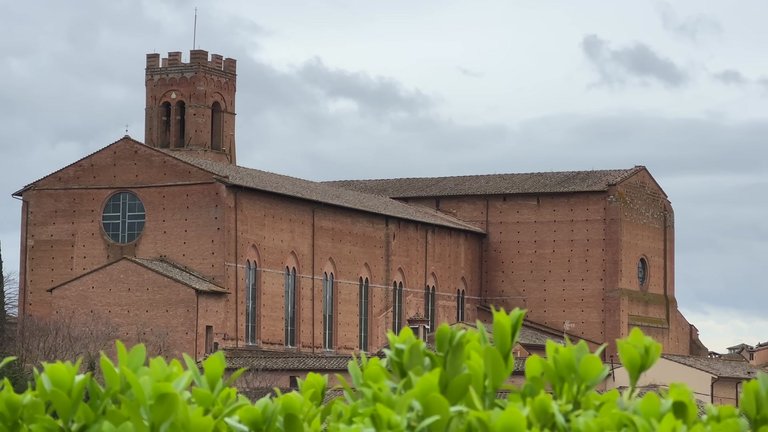
Near the basilica, you’ll find Saint Catherine’s home and shrine. Entry is free and worth a visit.
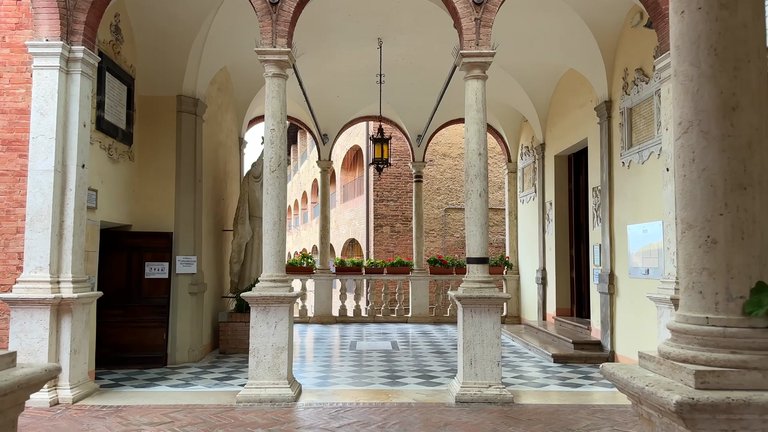
If you’ve never been to Italy, now I’ll take you to the most classic version of old Italy. In front of us: brick houses, green shutters, small floral decorations. A traditional osteria and a pizzeria on the ground floor. This is the essence of Italy.

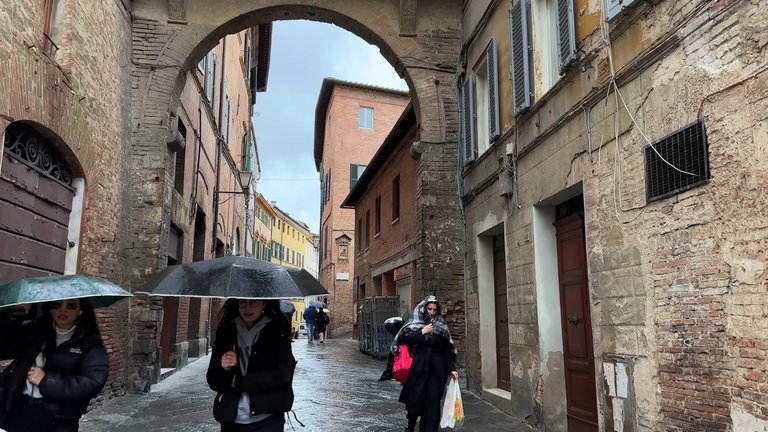


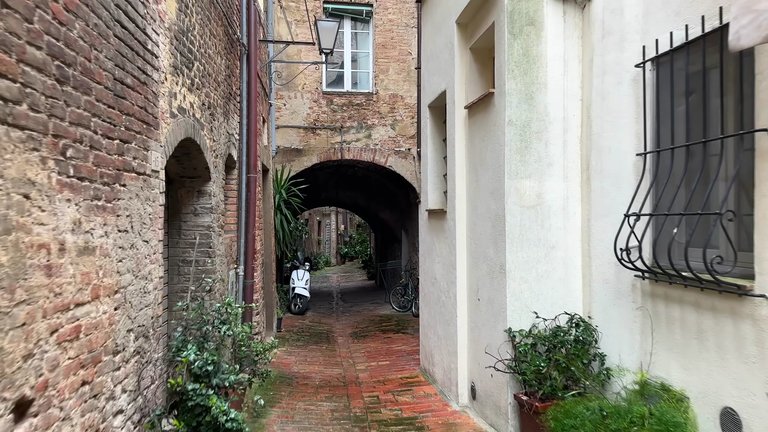
Anyone who has been to Italy will confirm this. They’ve surely seen a stone-façade church like this. I didn’t even try to learn its name. The name doesn’t matter. It’s the architecture it represents.
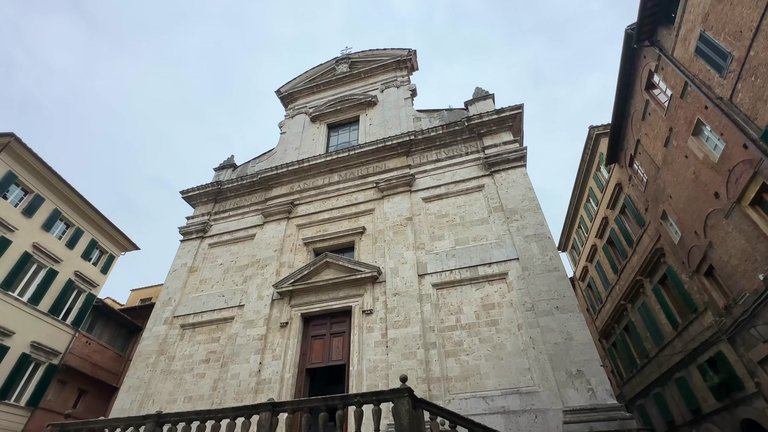
In front of me was a building with gothic arches. But all the details on the facade were painted. The illusion was incredibly convincing.
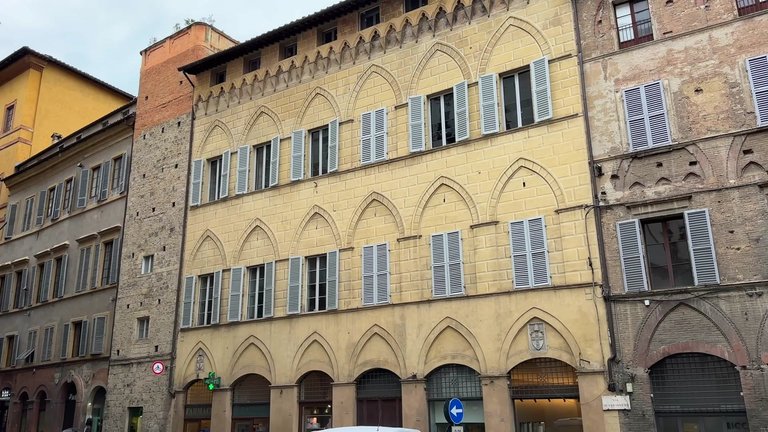
As I continued, a gentle Siena-style rain began. This is Italy. The weather changes often. It may rain once, twice, even three times a day, but it usually doesn’t last long.
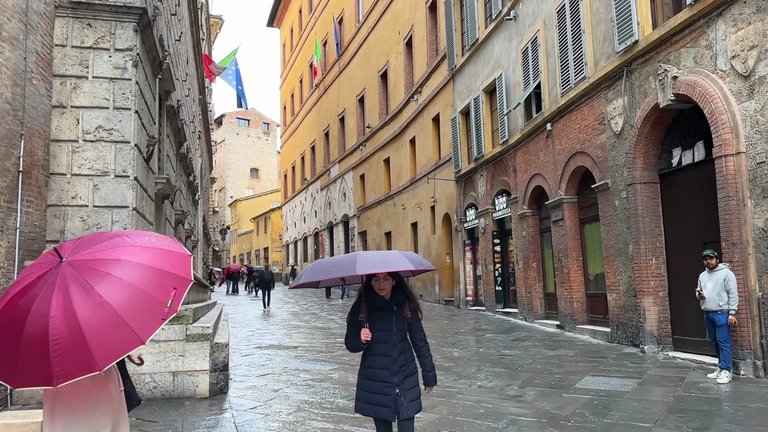
What’s unusual for Italy is the number of young people in Siena. This area is home to the Palazzo Piccolomini and one of Europe’s oldest universities. Maybe not as old as Bologna, but in the same category as Florence and Padua.
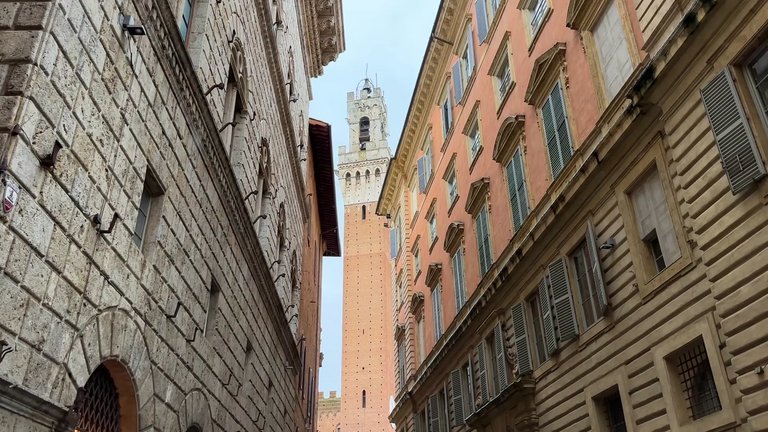
As I turned left, I saw the Glutton Tower. I walked to Piazza del Campo and saw a rare sight. The square was empty. Just a few tourists near the Fountain of Joy. Usually students sit here, eat lunch, but that day it was wet, so no one was around.
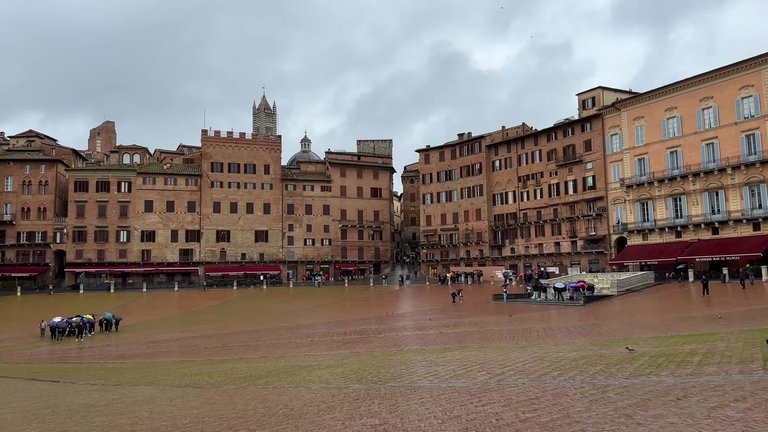
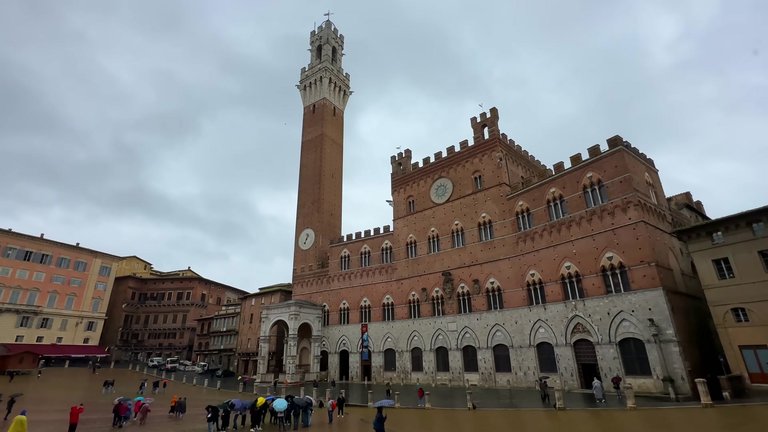
Dear friends, thank you so much for exploring with me. See you on the next adventure.
You can check out this post and your own profile on the map. Be part of the Worldmappin Community and join our Discord Channel to get in touch with other travelers, ask questions or just be updated on our latest features.
Oh my goodness, you're so good at posting about experiences in places and... What great photographic instinct!... This is actually 100% enjoyable to look at!... Very good work!...
And today I was captivated by this image in particular!...
This is perhaps the most intimate photo of that place among those you shared with us today. The lateral framing and the depth accentuated by the imposing structure of the "Torre del Mangia" have created a true visual apotheosis here!
And on the other hand, it's a photo with a lot of street character at the same time!... And I love that in a photo! 😃📷👍
¡Bravo! 👏
!discovery 30
!PIZZA
This post was shared and voted inside the discord by the curators team of discovery-it
Join our Community and follow our Curation Trail
Discovery-it is also a Witness, vote for us here
Delegate to us for passive income. Check our 80% fee-back Program
$PIZZA slices delivered:
@jlinaresp(12/15) tipped @annativa
Come get MOONed!
Amazing photography dear
This is a lovely virtual tour of Siena -- thank you!
@tipu curate
Upvoted 👌 (Mana: 60/70) Liquid rewards.
Congratulations @annativa! You have completed the following achievement on the Hive blockchain And have been rewarded with New badge(s)
Your next target is to reach 4250 upvotes.
You can view your badges on your board and compare yourself to others in the Ranking
If you no longer want to receive notifications, reply to this comment with the word
STOPHello.
To confirm your authorship of the content, could you please add the link to your Hive blog to a profile on a well-established social media account like Facebook, Instagram, or Twitter (which has not been recently created)?
After you add the link, please respond to this comment with the URL link to that website.
You can remove this mention once we confirm the authorship.
Thank you.
More Info: Introducing Identity/Content Verification Reporting & Lookup
Hiya, @glecerioberto here, just swinging by to let you know that this post made it into our Top 3 in Travel Digest #2618.
Your post has been manually curated by the @worldmappin team. If you like what we're doing, please drop by to check out all the rest of today's great posts and consider supporting other authors like yourself and us so we can keep the project going!
Become part of our travel community:
congratulations for the topper. your post is worth it, very nice. :)
Waw amezing photography 😍🤩
I was mesmerized by these photos, I can say that you have good shots. I very amazed with the place.